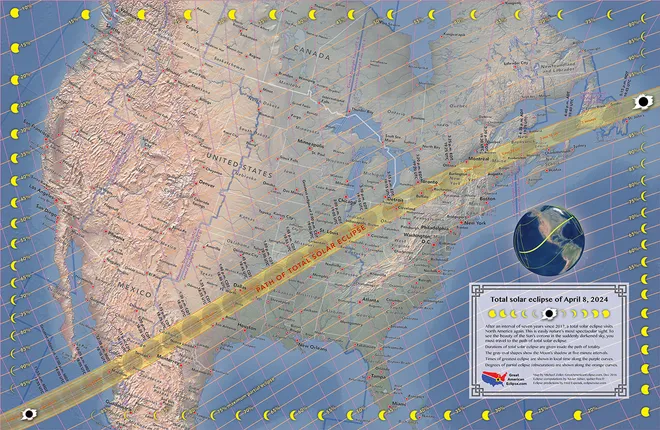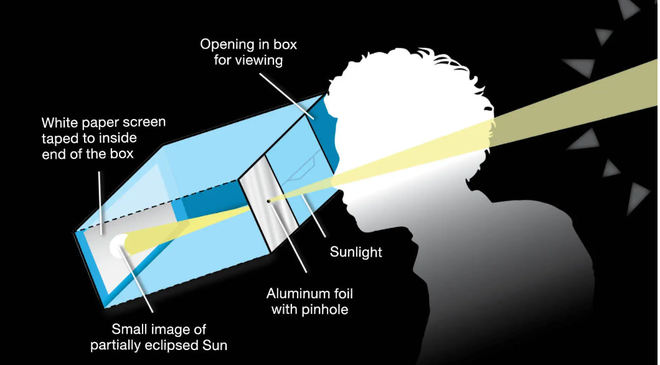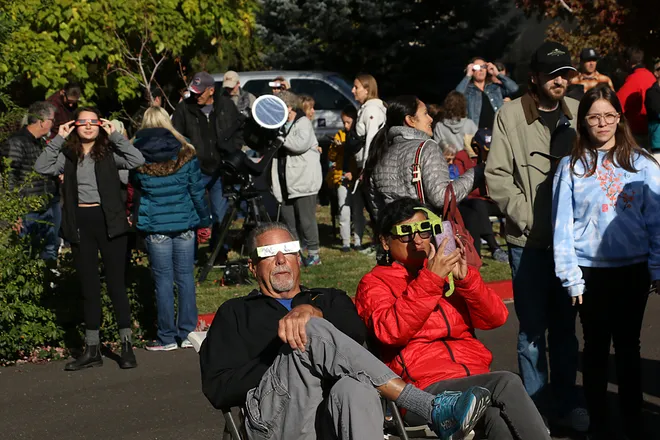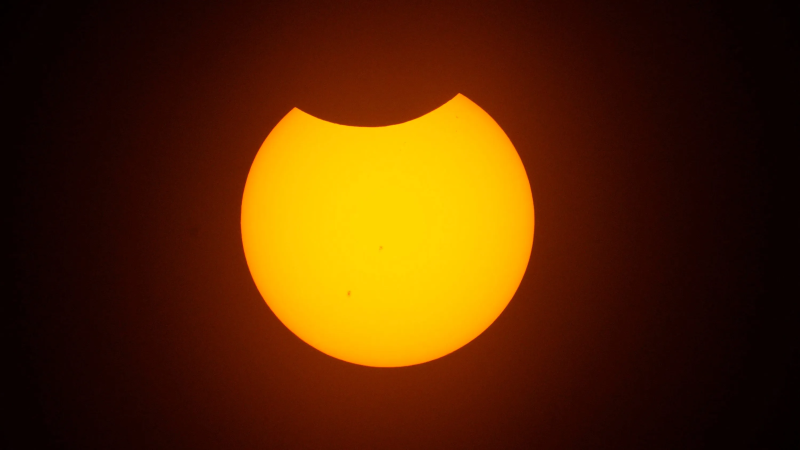Miss Saturday's eclipse? Don't despair, another one is coming in April
Did you miss the "ring of fire" eclipse Saturday? The universe has you covered. Literally.
A total solar eclipse is forecast on April 8, according to NASA, giving millions of people in North America a dash of darkness. The space agency said the phenomenon will pass over Mexico, the United States and Canada and make the sky appear as if it were dawn or dusk.
That brief moment of darkness will happen when the moon passes between the sun and Earth, blocking the sun. Some people will be in the path of totality and – ideally wearing the proper eye protection until that moment – they'll be able to see the moon completely cover the sun. Only those in that path can remove their eclipse glasses and see it with the naked eye.
It will be the last total solar eclipse visible from the contiguous U.S. until 2044.

How long will the April 2024 eclipse last?
Depending on where you're located, totality is expected to last just over four minutes.
The total eclipse will start in Mexico, then cross the U.S. in Texas around 12:23 p.m. local time and pass through Oklahoma, Arkansas, Missouri, Kentucky, Indiana, Ohio, Pennsylvania, New York, Vermont, New Hampshire and Maine before it exits around 2:22 p.m. local time for eastern Canada.

How can I watch the total solar eclipse?
NASA recommends watching the next eclipse with proper eye covering. Officals warn that viewing the sun through a camera, binoculars or a telescope without a special solar filter could cause severe eye injuries.
People are urged to view the eclipse through eclipse glasses or an eclipse projector.
"When watching the partial phases of the solar eclipse directly with your eyes, which happens before and after totality, you must look through safe solar viewing glasses, also known as “eclipse glasses,” or a safe handheld solar viewer at all times," NASA said on its eclipse website.
Sunglasses do not count as eclipse glasses, the space agency noted.

Where can I find eclipse glasses?
The American Astronomical Society lists suppliers with approved eclipse-viewing glasses.
According to space.com, ISO-approved glasses must meet the following requirements:
- No more than 0.00032% of sunlight may be transmitted through the filters.
- Filters must be free of defects including scratches, bubbles, and dents.
- Handheld viewers must cover both the right and left eye.
- Product labels must include the manufacturer name, instructions for safe use and warnings of any dangers of improper use.
See photos from October's Ring of Fire
A rare annular solar eclipse happened early Saturday. According to NASA, in this type of eclipse, the moon is at its farthest point from the Earth when it passes between the sun and Earth. During this event, the moon appears smaller than the sun and creates a "ring of fire effect."
Did you miss it? See photos from across the nation.

Contributing: Trevor Hughes, Emily DeLetter, Natalie Neysa Alund, USA TODAY.
Disclaimer: The copyright of this article belongs to the original author. Reposting this article is solely for the purpose of information dissemination and does not constitute any investment advice. If there is any infringement, please contact us immediately. We will make corrections or deletions as necessary. Thank you.





